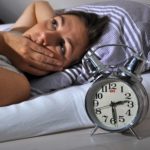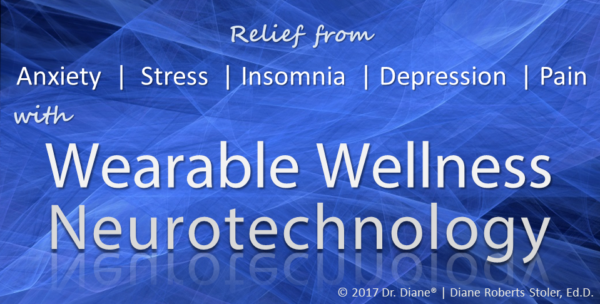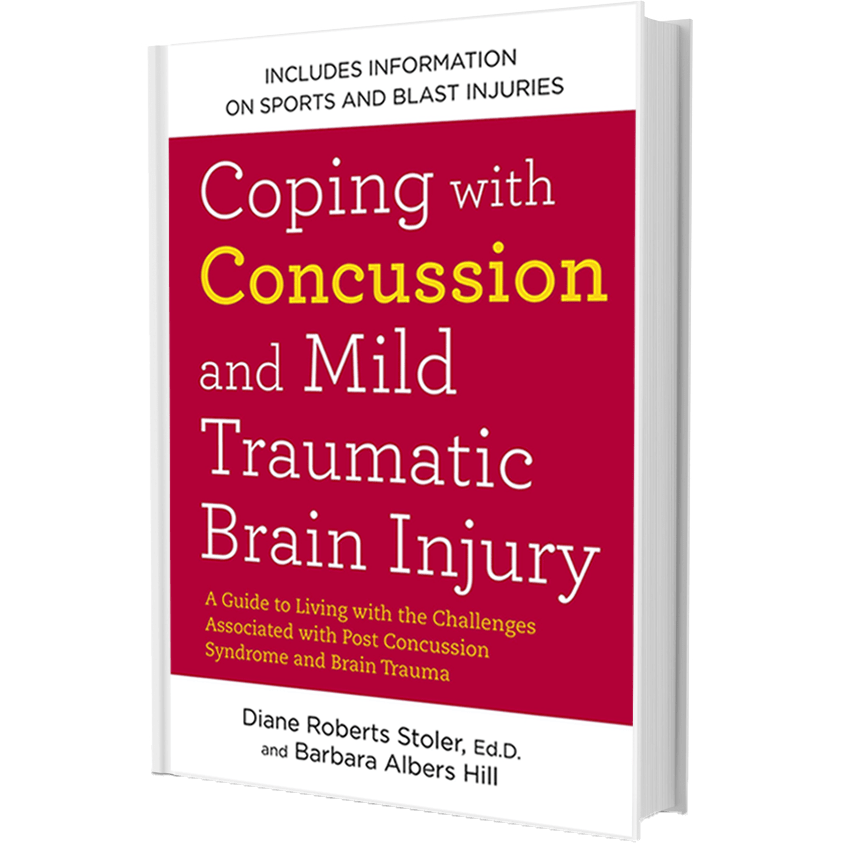I Can’t Sleep: Sleep Problems From Brain Injury?
I Can’t Sleep: Sleep Problems From Brain Injury?
 As mentioned in my previous blogs, March is Brain Injury Awareness Month. I want to bring awareness to the fact that sleep problems can be a result of a brain injury, such as concussion (mild traumatic brain injury). Common complaints I hear when doing a consult or intake are the following: 1) Problems falling asleep; 2) Staying asleep (disrupted sleep) or 3) Both. Some of my clients and patients say they can sleep anytime or can sleep for 10-14 hours. However, the majority of my clients and patients ask, “I can’t sleep. Is it from my Concussion?” The answer is YES.
As mentioned in my previous blogs, March is Brain Injury Awareness Month. I want to bring awareness to the fact that sleep problems can be a result of a brain injury, such as concussion (mild traumatic brain injury). Common complaints I hear when doing a consult or intake are the following: 1) Problems falling asleep; 2) Staying asleep (disrupted sleep) or 3) Both. Some of my clients and patients say they can sleep anytime or can sleep for 10-14 hours. However, the majority of my clients and patients ask, “I can’t sleep. Is it from my Concussion?” The answer is YES.
And in order to recover, sleep, specifically restorative sleep, is essential to repair and heal the brain. Without restorative sleep, symptoms of a traumatic brain injury, whether it is a Concussion, Moderate, or Severe, will continue.
What is Restorative Sleep?
I describe restorative sleep as being similar to a bridge being repaired, which is the brain. To repair a bridge, you need to stop traffic or allow only essential traffic to go by, so the repair work can take place, so, too with the brain. And periodically you need to allow traffic to continue. Like the bridge, the brain can be repaired when the traffic has stopped. In this phase, only the essential, autonomic system functions continue, such as: heart, breathing, bowel, and blood flow. The peripheral nervous system to your arms, legs are totally stopped.
Anyone who owns a dog can clearly see this. In NON-Rem (Rapid Eye Movement) state, the dog becomes like dead weight and the limbs are almost in a paralyzed, frozen posture. This is when the traffic is stopped. When the dog goes into REM state, you may be able to see that the dog is dreaming about chasing something and barking in their sleep. This is when the traffic is allowed to move on the bridge, and when the integration of information can be shared with other parts of the brain and body. Restorative sleep consists of the completion of all five stages of sleep, and also the chemical changes that occur within a twenty-four-hour period that allow the brain and body systems to be repaired, heal, and grow. The fluctuation from Non-Rem to Rem is called the circadian rhythm, which is the sleep/wake cycle within twenty-four hours. As the day wears on, we begin to desire rest and sleep. Melatonin, a naturally occurring hormone, helps regulate the sleep/wake cycle by lowering the body temperature and inducing drowsiness. Melatonin affects a small nucleus, the suprachiasmatic nucleus, in the hypothalamus, or upper brain stem.
The Effect of Neurotransmitters and Neuromodulators on sleep/wake cycles
Wakefulness
Acetylcholine – High
Serotonin – High
Norepinephrine – High
Histamine – High
Orexin – High
GABA – Low
Deep Sleep
Acetylcholine- Low to None
Serotonin- Low
Norepinephrine- Low
Histamine- Low
Orexin- Low
GABA- Medium
REM Sleep
Acetylcholine- High
Serotonin- None
Norepinephrine- None
Histamine- None
Orexin- Low
GABA- High
Dreaming is extremely important. Dreaming provides the integration of the repair work. Some of the most famous inventions and theories have come out of dreaming!
Why Sleep Problems Can Occur After a Brain Injury
A Brain Injury (concussion, moderate or severe) causes dysregulation within the brain, resulting in sleep disturbance. You may feel extraordinarily tired if your brain injury affects your ability to fall asleep or disrupts your customary sleep/wake cycle. This is a common complaint, because sleep patterns are fragile and can easily be affected by injury to the brain. You may notice that in the first four to six weeks following injury, pain and other symptoms may play havoc with two key facets of sleep: sleep initiation (the ability to fall asleep) and sleep maintenance (the ability to stay asleep). Often, people with a traumatic brain injury (concussion) awaken several times each night for no apparent reason. Their sleep patterns may appear inverted, because they sleep more during the day and less at night.
Sleep problems may stem from intrinsic sleep disturbances such as pain, problems with sleep apnea, or narcolepsy that was present before the injury but has been worsened by brain trauma. Or you may experience extrinsic sleep disturbances, which are environmental disruptions of sleep patterns due to noise, temperature fluctuations, or other stimuli that you would have been able to ignore in the past. There are four types of sleep disturbances that are most common. The first is, insomnia, which is the inability to fall asleep or remain asleep. It is the most common sleep problem among the world’s population, and has increased with the fast pace of today’s lifestyle. Insomnia often occurs immediately following a concussion and, if not treated, may continue for years. Hypersomnia is the inability to become fully awake or the need for excessive quantities of sleep. This is a very common symptom after a concussion. The sleep/wake cycle disturbance, or circadian rhythm disturbance, interferes with one’s inner clock that regulates periods of sleep and wakefulness. This condition may predate a concussion, but be worsened by the injury, or it may be caused by the injury itself. Finally, parasomnias are types of motor problem that includes night terrors, nightmares, periodic leg kicking, or the twitching of restless legs syndrome. Any disturbances in sleep can cause problems with memory and thinking, mood issues such as depression and anxiety, chronic fatigue, and chronic pain.
What Causes Sleep Problems?
As the result of a concussion, the brain becomes dysregulated, thus causing sleep disturbances and sleep deprivation. When an individual is sleep deprived, they are unable to achieve stage five, needed for restorative sleep. Sleep disturbances can cause issues related to memory and thinking, mood problems such as depression and anxiety, chronic fatigue and chronic pain. The two most common types of sleep problems that occur after a concussion are insomnia, the inability to fall asleep or stay asleep, and hypersomnia, the need for excessive amounts of sleep or inability to stay awake. There is also sleep/wake cycle disturbances, an issue regarding a person’s internal clock that regulates periods of sleep and wakefulness, as well as parasomnias, or motor problems such as night terrors, nightmares, and occasional leg kicking. The two types of sleep, non-rapid eye movement (NREM) sleep and rapid eye movement (REM) sleep, encompass five stages of sleep that are all crucial for restorative sleep. These five stages are:
1. Light theta wave sleep
2. True light theta sleep
3. Light delta wave sleep
4. Deep slow wave delta sleep
5. Rapid eye movement sleep (REM)
These five stages of sleep must be achieved in order for restorative sleep to occur, in which the brain repairs itself by achieving brain wave regulation and creating needed connections through the brain.
What is Brain Injury-Related Sleep Like?
For me, prior to my first concussion, I slept soundly for six hours a night and had great dreams. I never woke up during that time and always awakened alert and refreshed. After my first brain injury, a concussion, I would sleep for 19 hours and wake up groggy and disoriented. It would take me almost an hour to get focused. With the use of neurofeedback, cranial electro stimulation (CES), and changes to my diet, my sleep cycle once again provided restorative sleep. That is until I had a subsequent concussion. Each new concussion threw off my sleep cycle again, but I am now able to go to bed at 1:00 a.m. and wake up refreshed at 8:00 a.m. My mother, who sustained three concussions, used to be up all night and sleep all day. However, after I introduced her to a cranial electro stimulation, through use of a CES device, she was able to re-regulate her brain and resume a normal sleep schedule. So too for my middle son, who sustained a brain injury (concussion) from an auto accident. He too had awful sleep problems until I introduced him to both neurofeedback and a CES device.
Diagnosing Sleep Disturbances
It is easy to confuse brain injury-related sleep problems with other conditions such as depression, chronic fatigue, chronic pain, post traumatic stress disorder, and certain sleep disorders. Disturbances in sleep also share symptoms with clinical depression—loss of appetite, insomnia, and chronic drowsiness.
An evaluation of sleep disturbances after a concussion should include the following:
- A detailed history of sleep patterns prior to injury
- A current sleep log
- The type of work and shift the patient was doing prior to injury
- An account of alcohol, substance, and medication usage
- A history of physical injuries and chronic pain
- A list of current medications and stimulants
- A history of psychiatric and/or mental health issues
- The duration and description of current problems
In addition, there are sleep centers that can perform in-depth sleep studies that include the use of a Polysomnograph (PSG). This is the standard tool for measuring sleep disturbances and incorporates assessment of breathing, respiratory muscle effort, muscle tone, REM sleep, and the four stages of NREM sleep. However, this procedure may be costly if not covered by your health insurance provider. Also used are the Multiple Sleep Latency Test, the electroencephalogram (EEG), the electro-oculogram (EOG) and the electromyography (EMG). In addition, there is Actigraphy, which uses a small wrist watch to measure muscle movement during sleep.
CONVENTIONAL TREATMENTS FOR SLEEP PROBLEMS
There are two conventional medical avenues to treat sleep disturbances. The first is behavioral and/or environmental intervention, which includes the following:
- Chronotherapy, or stabilized time of waking. It is important to go to bed and wake up at the same time each day.
- Reduction of or avoidance of caffeine and alcohol.
- Elimination of tobacco.
- Eating a higher protein diet while eliminating sugar, artificial sweeteners, and processed foods.
- Phototherapy, or careful use of and exposure to light.
- Environmental controls such as turning off lights and minimizing background noises.
- Regular exercise; however, do not work out within four hours of your bedtime.
- Limited time in bed by not watching TV in the bedroom.
- Napping, or not napping. Recent research shows that a 90-minute nap during the day promotes restorative sleep at night. It is recommended that you discuss this with your doctor.
- Selection of the proper bed, pillow, and mattress for the promotion of restorative sleep.
- Psychotherapy; specifically, Cognitive Behavioral Therapy to learn new cognitive approaches to sleeping and daily living and/or Trauma Therapy to minimize the effect of PTSD.
The second conventional approach to correcting sleep disturbances is pharmacological treatment. The following substances can help if taken on a limited, short-term basis and under your doctor’s supervision:
- Melatonine (Ramelteon): 8 mg at bedtime helps improve total sleep.
- GABA: a neurotransmitter that is helpful in promoting sleep.
- Desyrel (Trazodone) and some other low-dose antidepressants may help sleeping problems, though their side effects may worsen such symptoms as daytime fatigue and memory difficulties.
- Nonbenzodiazepines such as: Zolpidem (Ambien), Zaleplon (Sonata), and Eszopiclone (Lunesta).
- Acetylcholinesterase Inhibitors (Aricept, Reminyl, and Exelon) and wake-promoting agents that increase vigilance while increasing verbal and visuospatial memory.
COMPLEMENTARY TREATMENTS FOR SLEEP PROBLEMS
Acupuncture and Scenar are very effective at correcting many aspects of sleep disturbance, along with changes in your diet. In my practice, we have an integrative team of brain health experts. Several of these team members specialize in sleep problems, including Martha Lindsay (link to Martha), our nutritional educator, and Tom Tam (link to Tom) and Bill Morgan (link to Bill) who specialize in acupuncture. Neurofeedback is an extremely helpful non pharmacological approach. The drawback is that many insurance companies do not cover neurofeedback; thus, the thirty-plus sessions over the course of several years can be very costly. I specialize in this area, as does team member Paul Soper.
In addition, I want to share some exciting therapeutic products for those who specifically deal with symptoms of anxiety, depression, insomnia or chronic pain and want relief from these symptoms. 
These Wearable Wellness Neurotechnology products provide effective, drug-free relief from anxiety, stress, insomnia, depression, and chronic pain, and can be used at home, in the office, or on the go.
TYPES OF WEARABLE WELLNESS NEUROTECHNOLOGY
- Cranial Electrical Stimulation (CES)
- EmWave2
- Restorative Health Cushion
- Restorative Health Blanket
CES DEVICE
A highly cost effective method is cranial electro stimulation (CES), which is a FDA-cleared medical device for insomnia. CES stands for Cranial Electrotherapy Stimulation. It is the process of using low power electrical current to stimulate the brain to restore and re-balance the various neurohormones. This has been shown to give especially great results for anxiety and insomnia. However, CES has been a relatively unknown and underused technology due to the fundamental Western bias in favor of pharmaceuticals.
EMWAVE2®
Is a portable and convenient way to reduce stress, balance emotions and increase performance. Used just a few minutes a day, this simple-to-use technology helps you transform feelings of anger, anxiety or frustration into more peace, ease and clarity to be at your best.
The emWave2® will teach you to change your physiology through breathing and focusing on positive emotions. The emWave2® collects pulse data through a pulse sensor and translates the information from your heart rhythms into breathing guidelines to help you achieve syncopation between the heart, brain, and autonomic nervous system. This state of syncopation is called coherence and is a foundation for well-being and a healthy response to stress.
RESTORATIVE HEALTH BLANKET AND CUSHION
The Restorative (Solaris) Health Blanket and Cushion were developed to rebalance and restore harmony to the body’s natural energy flow providing amazing health benefits by working as both an “energy shield” and as an “energy mirror”. Reflecting the body’s own “energetic portrait” provides favorable conditions for healing and enhancing overall well-being for ALL ages.
Restorative Health Blanket and Cushion Uses:
- Strengthens the immune system and increases resistance to seasonal allergies, cold, flu with repeated use.
- Improves recovery period from traumas, injuries, surgery, and common illnesses.
- Aids in redistributing the body’s energy, which promotes faster healing and encourages blood flow in areas of poor circulation
- Increases brain wave activity thereby enhancing one’s mood and outlook
- Protects from harmful electromagnetic fields
- Reflects the problem areas in the body’s “energy portrait” back on itself, thereby acting as a homeopathic stimulus for immune and healing responses
- Safe to use, with no complications, or side effects
- Can be used as a stand-alone treatment or combined with other therapies, fitness, or wellness programs
- Practical and portable—can be used in the home or office, fitness center, or on the road.
- pRoshi. The blinking glasses of pRoshi help the brain to regulate itself whether you wear them or have them blinking against the wall during the night.
ALTERNATIVE TREATMENTS FOR SLEEP PROBLEMS
Reiki and QiGong are very effective ways to treat sleep disturbances. Clara Diebold is our team Reiki expert, while I have been trained in both, along with being a Bach Flower Practitioner. Bach Flower Rescue Remedy Sleep may also help. A Bach Flower practitioner can assess whether other remedies, such as Star of Bethlehem, are appropriate for you. Aroma therapy with lavender or chamomile oil is often used to promote sleep, as are a variety of homeopathic remedies and herbal preparations such as valerian root. It is important to consult with a naturopath or homeopathic practitioner with a background in working with mTBI patients before using any alternative products.
Over-the-counter sleep products are designed for the general population, not as remedies for specific physical conditions or disorders. Before purchasing an over-the-counter product, please consult with your doctor. Remember that each post concussive sleep disturbance is as unique as the person who was injured. An experienced professional can give you the best information about remedies especially suited to your symptoms and needs.
Our Brain Health Experts Can Help!
Our integrative team of Brain Health Experts provides various treatments for sleep problems and insomnia and can work with your current providers to help you regain your life again. If you live elsewhere in the world, the Brain Health Experts can provide virtual treatment too. If this is not possible, Dr. Diane® and/or the Brain Health team expert will find someone in your locale to help you.



i feel this all the time thank you for the medical explanation